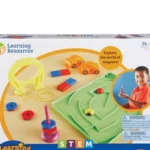In today’s fast-paced and expensive world, it can be challenging for students to save money while still enjoying the things they love. However, with a little savvy shopping and some smart strategies, it is possible to stretch your budget further than you ever thought possible. This article will guide you through a variety of tips and tricks to help you save money on your shopping endeavors. From taking advantage of student discounts to buying second-hand products, planning ahead for clothes shopping, and shopping during sales and promotions, this comprehensive guide has got you covered. So, get ready to embark on a budget-friendly shopping journey and discover how you can save money without compromising on style or quality.
Contents
- 1. Set a Budget
- 2. Make a List
- 3. Search for Coupons
- 4. Compare Prices
- 5. Buy in Bulk
- 6. Split Costs with Friends or Roommates
- 7. Take Advantage of Student Discounts
- 8. Buy Second-Hand Products
- 9. Thrift Shopping
- 10. Plan Ahead for Clothes Shopping
- 11. Research Stores with Student Discounts
- 12. Shop During Sales and Promotions
- 13. Stick to Essential Items
- 14. Consider Versatile and Timeless Pieces
- 15. Take Care of Your Clothes
- 16. Shop Online
- 17. Utilize Rewards Programs
- 18. Avoid Impulse Buying
- Conclusion
-
Frequently Asked Questions
- 1. How can setting a budget help students save money?
- 2. Why is making a list important for smart shopping?
- 3. How can searching for coupons benefit students?
- 4. Why is it important to compare prices before making a purchase?
- 5. How does buying in bulk help students save money?
- 6. Why should students consider splitting costs with friends or roommates?
- 7. What are the benefits of taking advantage of student discounts?
- 8. How can buying second-hand products benefit students?
- 9. What is thrift shopping, and why is it a good option for students?
- 10. Why is planning ahead for clothes shopping important?
- References
1. Set a Budget
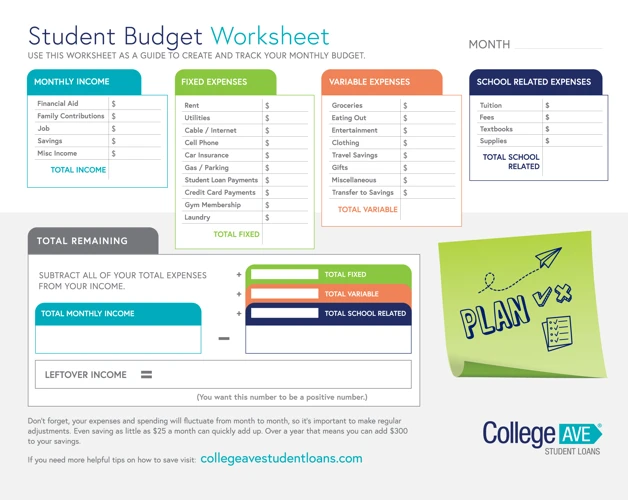
Setting a budget is the first step towards smart shopping and saving money as a student. It’s important to have a clear plan for your finances to avoid overspending and accumulating unnecessary debt. To set a budget, follow these steps:
1. Create a monthly budget: Start by listing all your income sources, such as part-time job earnings, scholarships, or allowances. Then, make a comprehensive list of your expenses, including educational costs like tuition and books, as well as living expenses like rent, groceries, and transportation. Use a spreadsheet or budgeting app to organize your income and expenses and allocate a specific amount for each category.
2. Stick to your budget: Once you have established your budget, it’s crucial to commit to it. A budget is only effective if you follow through with it and resist the temptation to overspend. Remember that sticking to your budget requires discipline and self-control.
3. Identify your impulse-buying triggers: Take some time to reflect on your spending habits and identify the triggers that lead to impulsive purchases. Whether it’s stress, boredom, or peer pressure, understanding these triggers can help you avoid unnecessary spending and stay on track with your budget.
4. Budget with cash and envelopes: If you struggle with overspending, consider using the envelope budgeting system. Set aside a specific amount of cash for each spending category, such as groceries or entertainment. Once the cash in that envelope is gone, you can’t spend any more in that category until the next budgeting period.
5. Save for your future: While budgeting helps you manage your current expenses, it’s also important to save for your future. Set clear financial goals, whether it’s saving for college expenses, retirement, or emergencies. Saving with a purpose gives you a long-term perspective and motivates you to make wise spending choices.
By setting a budget and committing to it, you’ll have a better understanding of where your money is going and be able to make more informed spending decisions. It’s the foundation for smart shopping and financial management as a student.
Related link: If you want to learn more about maximizing your savings as a student, check out our article on the best ways to stretch your budget as a college student.
2. Make a List

When it comes to smart shopping, one of the most important steps is to make a list. This simple yet effective strategy can help you stay organized and focused on what you need to buy, preventing impulse purchases that can quickly add up and exceed your budget.
Start by creating a master list on your phone or a piece of paper. Include all the essentials that you buy regularly, such as eggs, dairy, meats, fruits, vegetables, drinks, and a few go-to snacks. This list will serve as a foundation for your shopping trips.
In addition to your master list, use a whiteboard on your fridge to jot down any other items that you might run out of during the week. This way, you can easily keep track of what needs to be restocked.
Before each trip to the grocery store, take the time to combine your master list with the items on the whiteboard. This will ensure that you have a comprehensive list of everything you need for the day.
By having a list, you can avoid forgetting items and overspending on things you don’t actually need. Plus, the act of physically writing down your list can improve your ability to recall information, helping you stay on track and not miss anything.
Power tip: Consider using a digital note-taking app like Evernote to keep your shopping list with you at all times. This way, you’ll always have access to it on your phone, and any updates or changes you make on your desktop will instantly sync to your phone.
Remember to stick as closely to your list as possible, allowing yourself no more than three additional impulse buys if something catches your eye. This will help you stay disciplined and avoid unnecessary expenses.
Making a list is a simple yet effective strategy that can significantly impact your shopping experience and help you save money. So, before you head out to the store, take a few minutes to create your list and enjoy a more organized and budget-friendly shopping trip.
For more tips on maximizing your savings, check out our article on how to maximize savings with student discounts.
3. Search for Coupons
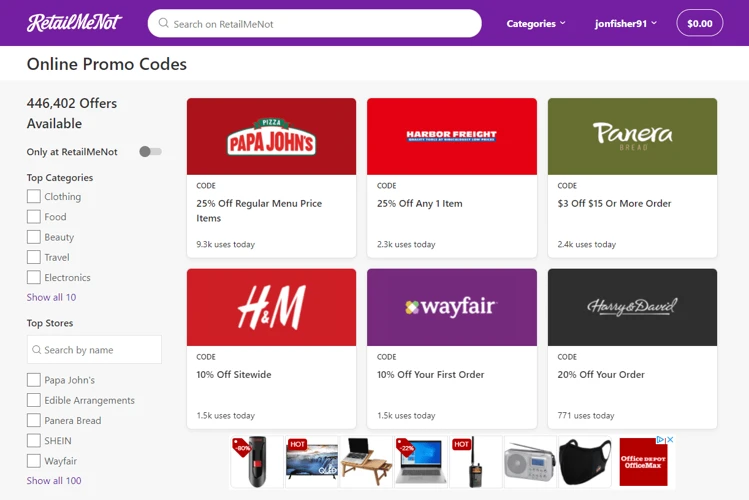
When it comes to saving money while shopping, one of the most effective strategies is to search for coupons. Gone are the days of relying solely on print coupons from newspapers. Nowadays, there are numerous ways to find and utilize coupons to get discounts on your purchases.
One option is to download the apps of your favorite retailers. Many of these apps offer digital coupons that you can easily “clip” on your phone. This eliminates the need to carry around stacks of paper coupons and makes it more convenient to redeem them at the register.
Additionally, there are coupon databases available online. These websites aggregate coupons from various sources, making it easy for you to find the best deals. Simply search for “coupon database” to find a website that suits your preferences. Some databases even allow you to search for specific coupon types, such as printable, newspaper inserts, or mobile coupons. You can also search your local newspaper for nearby deals.
Another way to find coupons is by searching for promo codes. Before finalizing your online purchase, do a quick search by typing the store’s name followed by “promo code” on a search engine. You might be surprised at the discounts you can find, such as savings on shipping fees or a percentage off your total purchase.
To make your coupon search even more efficient, consider installing coupon-finding apps like Rakuten and Ibotta. These apps offer cashback on various items, ranging from groceries to clothing to hotel stays. By using these apps, you can earn points or cash back on your purchases, which can then be redeemed for rewards like gift cards.
Remember to read the fine print and terms and conditions of each coupon or promo code to ensure that they are applicable to your purchase. Some coupons may have restrictions or expiration dates, so it’s important to be aware of the details before using them.
Searching for coupons is an excellent way to save money while shopping. Whether it’s through retailer apps, coupon databases, or promo codes, taking the time to find and utilize these discounts can lead to significant savings. So, before making any purchase, make sure to search for coupons and reap the benefits of discounted prices.
4. Compare Prices

When it comes to shopping, comparing prices is a crucial step in saving money. Before making a purchase, take the time to research and compare prices across different retailers. This will ensure that you are getting the best deal possible.
There are various online resources and tools available to assist with price comparison. Websites such as PriceGrabber, CamelCamelCamel, and Google Shopping allow you to compare prices across multiple retailers, helping you identify the best deals. Additionally, browser extensions like PriceBlink and Honey can automatically find lower prices while you shop, saving you the hassle of manually searching for deals.
To effectively compare prices, make notes of the item’s manufacturer or model number, as well as other details like size, color, or shipping fees. Use this information to check comparison shopping sites that list retail stores and online sellers that have the item. Be sure to focus on well-known and trustworthy comparison shopping sites to ensure accurate and reliable information.
Another helpful tip is to check the price history of the product. Some websites, like Camelcamelcamel, track and compare prices on Amazon, allowing you to see if the current price is a good deal or if it has been lower in the past. This information can help you make an informed decision and avoid overpaying for a product.
In addition to comparing prices, it’s also important to consider other factors such as customer reviews and ratings. By reading feedback from other buyers, you can gain insights into the product’s quality, performance, and durability. Look for trusted sources or verified purchasers to ensure that you have a comprehensive understanding of the pros and cons of the product.
By embracing comparison shopping and conducting thorough research, you can make smarter purchasing decisions and save money on buying electronics and other products. Remember to take into account the total cost of the product, including shipping, handling, delivery, taxes, or other fees. Don’t be swayed solely by the advertised “low price” without carefully reading the terms of the deal.
To make the most of your comparison shopping efforts, consider utilizing N26 Spaces sub-accounts to easily organize your money and save up for your shopping goals. By setting a budget and comparing prices, you can make your money go further and enjoy the satisfaction of finding the best deals.
5. Buy in Bulk

Buying in bulk can be a game-changer when it comes to saving money on groceries and household items. However, it’s important to be mindful and make informed decisions to ensure that buying in bulk actually saves you money.
When you’re grocery shopping on a budget, take the time to compare the price per unit or ounce for the item you’re buying. Don’t assume that the big bulk buys at discount stores are automatically the cheaper option. Sometimes, buying a smaller package with a coupon can actually be a better deal.
Buying in bulk is especially beneficial for items that have a long shelf life or can easily be stored, such as toilet paper, paper towels, pasta, rice, coffee, and canned goods. By purchasing these non-perishable items in larger quantities, you can save significantly compared to buying them in smaller quantities.
Not only can buying in bulk save you money, but it can also save you time and keep your shelves well-stocked. Imagine having enough washing powder to last your family until Christmas or enough nut butter to drizzle on all your pancakes. It’s a bargain that pays off in more bang for your buck!
It’s important to keep in mind that buying in bulk may not be suitable for all items, especially perishable ones. For example, buying bulk cereal can be a great investment for a family of four, but it may not make sense to purchase a large quantity of Greek yogurt if you’re the only one who will be consuming it before it goes bad.
In addition to groceries and household supplies, you can also consider buying other items in bulk, such as clothes. Purchasing wholesale clothes can be much cheaper than buying from a retailer. For example, buying one hooded sweatshirt from your favorite retailer can be quite expensive, but buying wholesale sweatshirts allows you to get a few for the same amount of money.
When buying in bulk, it’s important to think before you buy. Consider your needs and storage capabilities, and don’t buy more than you really need. By being mindful and strategic with your bulk purchases, you can save money and ensure that you’re getting the best deal possible.
To learn more about student discounts and other money-saving tips, you can explore our article on exploring non-traditional student discounts.
6. Split Costs with Friends or Roommates

Living with roommates can be a great way to save money, but it’s important to handle expenses properly to avoid arguments and misunderstandings. Here are some tips on how to split costs with friends or roommates in a fair and peaceful way.
First, create house rules and have a written agreement with your roommates before moving in together. This agreement should outline how expenses will be handled and prevent future conflicts. It’s better to make these decisions ahead of time when everyone is calm, rather than in the middle of a disagreement.
When it comes to dividing rent, one fair method is to consider the square footage of each roommate’s living space. This way, everyone pays according to the size of their room or the area they occupy.
In addition to rent, there are other shared expenses to consider, such as utilities, cable TV, and groceries. It’s important to discuss and agree on how these costs will be split. One way to balance the expenses is for each roommate to take responsibility for different items. For example, one roommate can bring kitchen utensils and pots and pans, while another roommate buys the vacuum or kitchen table and chairs.
To keep track of each person’s belongings, you can maintain a running list or mark initials on items. This will help avoid confusion when it’s time to move out.
Remember to also consider the presence of guests. If you have friends or family members frequently staying over, discuss how the additional costs will be handled.
Splitting costs with roommates can make everyday life more affordable, but it’s important to choose your roommates wisely and ensure they have a reliable source of income. Open and honest communication about finances is key to maintaining a harmonious living arrangement.
For more information on student discounts and how to take advantage of them, you can check out the article on uncovering student discounts.
7. Take Advantage of Student Discounts
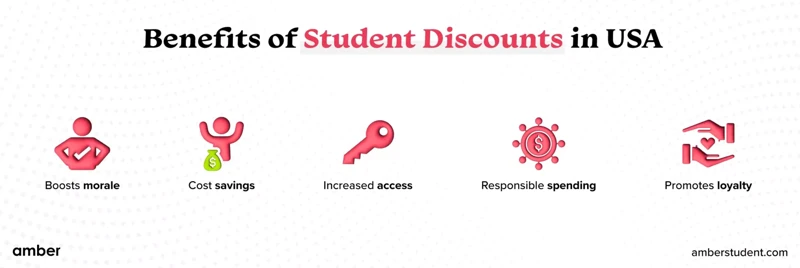
As a student, you have the opportunity to save money by taking advantage of student discounts. Many businesses offer special discounts exclusively for students, allowing you to get more for your money. Whether you’re shopping for clothing, electronics, or even travel accommodations, there are discounts available that can help you stretch your budget.
When it comes to booking hotels, be sure to check if they offer student discounts. Some hotels provide special rates for students, allowing you to save money on your weekend getaways or vacations. Before making a reservation, it’s always a good idea to do a quick Google search to see if the hotel you’re interested in offers student discounts.
In addition to hotels, you can also save on insurance by utilizing student discounts. Some insurance companies offer lower rates for students, so it’s worth exploring your options and comparing different providers to find the best deal.
Public transportation is another area where you can take advantage of student discounts. Many public transit agencies offer discounted passes for students, making commuting to college more affordable. Check with your local transit agency to see what discounts are available for students.
Don’t forget to utilize student discount programs. Websites like Student Advantage, Student Beans, and UniDays gather coupons and affiliate deals across various categories such as fashion, food, technology, and travel. By registering for a free account, you can access these offers and save money on a wide range of products and services.
When shopping at physical stores, it’s always a good idea to bring your student ID with you. Some retailers may offer discounts at the register for students, even if they don’t explicitly advertise it. Keeping a running list on your phone of places that offer student discounts can come in handy for future shopping trips.
As a student, you have access to a variety of discounts that can help you save money. From hotels and insurance to public transportation and online shopping, taking advantage of these student discounts can make a significant difference in your budget. So be sure to do your research, ask about discounts, and always carry your student ID to maximize your savings.
8. Buy Second-Hand Products
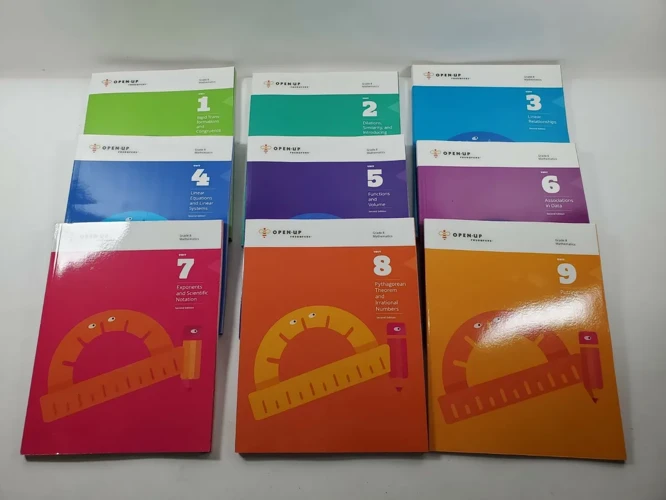
When it comes to shopping on a budget, buying second-hand products can be a game-changer. Instead of paying full price for brand new items, consider purchasing used items that are still in good condition. Not only will this save you money, but it can also help reduce waste and contribute to a more sustainable lifestyle.
One category of second-hand products that can offer significant savings is appliances. Rather than shelling out thousands of dollars for a new stove, refrigerator, or other household appliances, consider buying them from a place that offers used options at much lower prices. You’ll be surprised at the quality and functionality of these pre-owned appliances.
Another area where you can find great deals is wedding decor and attire. Second-hand decorations can be just as beautiful and can add a unique touch to your special day. Additionally, you might come across a stunning second-hand wedding dress that is meant for you. By opting for second-hand options, you can save a significant amount of money while still achieving the wedding of your dreams.
Gift cards are another item that you can buy second-hand to save money. Many people receive gift cards to places they don’t plan on visiting, and they often choose to sell them at a lower price. This means you can get a $50 gift card for as low as $35, allowing you to enjoy a major steal and save money on your purchases.
Jewelry is another item that often depreciates quickly in value. Instead of buying jewelry directly from a jewelry store, consider purchasing it second-hand. Not only will you save money, but you may also come across unique and vintage pieces that add character and charm to your collection.
When it comes to adding a furry friend to your family, consider adopting a pet from your local animal shelter instead of buying one from a puppy mill. Not only will you be saving a life, but you’ll also be bringing home a new companion at a much lower cost. Plus, adopting a pet is a rewarding experience that can bring joy and happiness to your household.
If you’re in need of a new cell phone, don’t rush to spend a fortune on a brand new one. Instead, visit phone stores to see if they offer any second-hand options. Alternatively, you can explore other stores that specialize in selling used electronics. You’ll be surprised at the quality and functionality of these pre-owned devices, and you’ll save a significant amount of money in the process.
For college students, textbooks can be a major expense. Instead of buying brand new textbooks, consider purchasing them second-hand from students who have already graduated and no longer need them. This can save you a substantial amount of money and still provide you with the necessary resources for your studies.
When it comes to transportation, buying a second-hand bicycle is a smart choice. Some bike brands charge exorbitant prices for new bikes, but you can avoid paying a lot of money by opting for a pre-owned bike. Check out garage sales, second-hand stores, and local neighborhood sales pages to find a bike that suits your needs without breaking the bank.
Computers and computer accessories are another category where you can find great deals on second-hand items. If you need a computer, keyboard, speakers, or other accessories, consider purchasing pre-owned options. These items will cost you significantly less than new ones while still providing the functionality you need.
Sports equipment can also be purchased second-hand at a fraction of the cost. Whether you’re in need of basketballs, boxing gloves, baseball bats, or any other sports equipment, check out garage sales, second-hand stores, and local neighborhood sales pages. You’ll be amazed at the quality and variety of items available at much lower prices.
By buying these 25 items second-hand, you can save a significant amount of money while still getting the items you need. Whether it’s appliances, wedding decor, gift cards, jewelry, pets, cell phones, textbooks, bicycles, computers, computer accessories, or sports equipment, opting for second-hand options can help you stretch your budget further and avoid paying full price for essentials. So, next time you’re on the hunt for something, consider checking out the second-hand market and enjoy the savings.
9. Thrift Shopping

Thrift shopping is a fantastic way to save money on your clothing and household items. Not only can you find unique and interesting pieces, but you can also brag about how little you paid for them. Here are some tips to make the most out of your thrift shopping experience:
1. Check the books, furniture, and housewares sections: Thrift stores often have a great selection of furniture, housewares, and books. You can find everything from modern cookbooks to vintage gems. Don’t forget to look for extra discount days to score even better deals.
2. Know how the store is arranged: Each thrift store has its own system for organizing items. Take the time to familiarize yourself with the layout so you can easily find what you’re looking for. This will save you time and ensure you don’t miss any hidden treasures.
3. Don’t settle: Just because you’re looking to save money doesn’t mean you should settle for items that don’t match your style. Only buy things that you truly love and feel excited about. After all, there’s no point in purchasing something you won’t use or enjoy.
4. Never pay too much: Remember, the whole purpose of thrift shopping is to save money. If you come across an item that seems overpriced, it’s better to pass on it. You might be able to find a similar item at a lower price elsewhere, or even a brand new one on clearance at a regular store.
5. Find out when the store offers discounts: Many thrift stores have specific days or times when they offer additional discounts on certain items or categories. Take advantage of these discounts to maximize your savings.
Thrift shopping can be a rewarding experience. It allows you to find affordable and unique items while also supporting a good cause if the store is associated with a charity. So grab your shopping bag and start exploring the world of thrift shopping – you never know what hidden treasures you might uncover.
10. Plan Ahead for Clothes Shopping
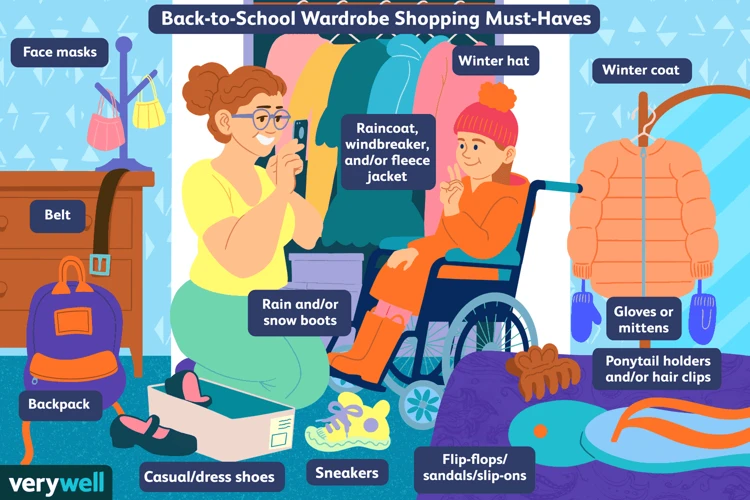
When it comes to saving money on clothes, one of the smartest strategies is to plan ahead. By thinking ahead and shopping for clothes in advance, you can take advantage of great deals and discounts. Here are a few tips to help you plan ahead for your clothes shopping:
1. Stock-Up Off Season: Take advantage of the quick turnover of clothing in stores by shopping for upcoming seasons. Look for winter clothing, sweaters, and coats in January, spring clothing and Easter dresses in April, athletic apparel in May, summer clothing and swimwear in July, and fall and back-to-school clothing in October. By purchasing clothes a season ahead, you can score amazing deals and avoid paying full price.
2. Check eBay Before You Buy: Before making a purchase at a store or online, it’s worth checking eBay for the item you want. Search for the brand name and a brief description or size to see if the item is available at a better price. This way, you can save money by purchasing the item from a seller on eBay instead of buying it from a retailer at full price.
3. Clothing Swap Party: Give new life to old clothes by organizing a clothing swap party with your friends. This fun event allows you to exchange unwanted clothes with your friends, giving you the opportunity to update your wardrobe without spending any money. Plus, it’s a great way to socialize and enjoy some delicious appetizers while refreshing your closet.
4. Thrift Shopping: Make thrift stores your go-to destination for affordable and unique clothing finds. As soon as they put out their new seasonal merchandise, be ready to explore the racks. Before you go, go through your own bins of clothing and make a list of sizes for next season’s essentials. This way, you can shop with confidence and avoid overbuying or missing out on something you need.
5. Bring a Flashlight: When shopping in stores, bring a flashlight to help you see imperfections and stains on light-colored clothes. The fluorescent lighting in many stores may not reveal these flaws, but a true white light from a flashlight will. It’s also helpful for reading small print on electronics and appliances, especially if you’re over 40.
By incorporating these strategies into your clothes shopping routine, you can save money while still getting the looks you love. Remember to plan ahead, explore thrift stores, and take advantage of clothing swaps to stretch your budget further. Happy shopping!
11. Research Stores with Student Discounts

When it comes to shopping on a budget, one of the best ways to save money is by taking advantage of student discounts. Many stores offer special discounts for college students, allowing you to get great deals on a wide range of products. But before you start shopping, it’s important to do your research and find out which stores offer these discounts.
To make your search easier, here is a list of stores that commonly offer student discounts:
1. Goodwill: Many Goodwill locations offer a 10%-20% student discount on certain days of the week. Contact your local store for more information.
2. Amazon: Enjoy the convenience of online shopping with the added benefit of a student discount. Amazon offers six months of free Amazon Prime for students, which includes free two-day shipping, easy returns, and access to streaming TV and movies.
3. JOANN: If you’re in need of fabrics or craft supplies, JOANN offers “student discount days” with 20% off for college students. Check your local store for details.
4. Pottery Barn: For furniture and decor, Pottery Barn offers a 15% discount for students with a valid .edu email or student ID.
5. Nike: Stock up on athletic wear with a 10% discount for college students.
6. Adidas: Get up to 15% off on Adidas products with their student discount.
7. Apple: While Apple products rarely go on sale, they offer an education discount that is open to all students, faculty, and staff.
8. Sprint and AT&T: Save on mobile phones with special savings for students from certain colleges.
9. Greyhound: If you’re planning a longer trip, Greyhound offers 10% off on tickets for college students.
10. Amtrak: Enjoy a discount of 15% off on train tickets and rail passes for students aged 13-25.
Remember, to qualify for these student discounts, you will usually need to provide proof of your student status, such as a student ID or .edu email address. It’s always a good idea to inquire about the discount policies and any restrictions or exclusions that may apply.
By researching stores with student discounts, you can make informed decisions about where to shop and save money on the products you need. Take advantage of these discounts and stretch your budget further without compromising on style or quality.
12. Shop During Sales and Promotions

When it comes to saving money on your purchases, one of the most effective strategies is to shop during sales and promotions. Sales are designed to encourage purchases and offer the opportunity to save a significant amount of money. However, it’s important to approach sales with caution and only buy items that you actually need or have planned to purchase.
By making a list of the gifts, clothes, or accessories you wish to buy throughout the year, you can patiently wait for end-of-season sales to get what you want at a discounted price. For example, prices often drop right after the holiday season ends, making it the perfect time to save on gifts and other types of purchases.
Major department stores and some mall stores have annual or semi-annual sales where they offer their best discounts of the year. These sales usually occur during lulls in the shopping calendar, so it’s important to keep an eye out for them. You can sign up for store emails to stay informed about upcoming sales and promotions.
In addition to end-of-season sales, there are other times throughout the year when items go on sale. Pay attention to store flyers, weekly sales, and search for online coupons to help you score deals on everything from sporting goods to auto parts. By being mindful of when items tend to go on sale, you can maximize your savings at the checkout.
It’s important to remember that sales can be tempting, but it’s crucial to stick to your shopping list and avoid being blinded by the price. Take a moment to evaluate whether you actually need the item before making a purchase. Don’t let the excitement of a deal cloud your judgment.
Shopping during sales and promotions can be a smart way to save money on your purchases. By planning ahead, staying informed about upcoming sales, and being mindful of your shopping list, you can take advantage of discounts and score great deals without breaking your budget. So, keep an eye out for sales and promotions, and make the most of your shopping trips.
13. Stick to Essential Items
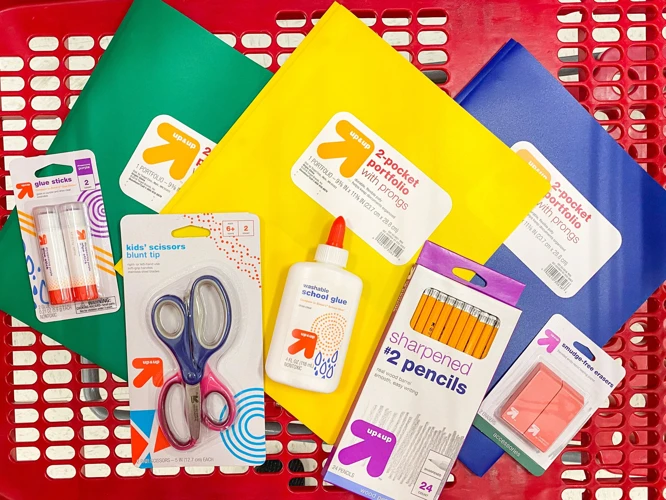
When it comes to shopping on a budget, it’s essential to focus on buying only the items that you truly need. Avoid the temptation to splurge on unnecessary or impulse purchases. By sticking to essential items, you can prioritize your spending and ensure that you are making the most of your limited budget.
One way to determine what qualifies as an essential item is to consider its practicality and functionality in your daily life. Think about whether the item serves a specific purpose or fulfills a basic need. For example, if you’re a student, essential items may include textbooks, stationery, and basic clothing items for everyday wear.
Additionally, consider the versatility of the items you are purchasing. Opt for pieces that can be mixed and matched with different outfits or serve multiple purposes. This way, you can get more use out of each item and maximize its value.
While it’s important to prioritize essential items, it doesn’t mean you have to sacrifice style. Look for affordable options that still align with your personal taste and fashion preferences. By being selective and thoughtful in your purchases, you can build a wardrobe or collection of items that truly represent your style without breaking the bank.
Remember, sticking to essential items also means being mindful of trends. Fashion trends come and go, and investing in trendy pieces can quickly become costly and unsustainable. Instead, focus on timeless and classic pieces that can withstand the test of time. These items will not only save you money in the long run but also ensure that you always have something stylish to wear.
By sticking to essential items, you can prioritize your spending, make the most of your budget, and build a collection of items that truly serve you. So, the next time you go shopping, think about what you really need and resist the urge to splurge on unnecessary items. Your wallet will thank you in the end.
14. Consider Versatile and Timeless Pieces

When it comes to building a budget-friendly wardrobe, it’s important to consider investing in versatile and timeless pieces. These are items that can be worn in multiple ways and will never go out of style. By choosing pieces that can be dressed up or down and mixed and matched with other items in your closet, you can maximize your outfit options without breaking the bank.
One example of a versatile and timeless piece is the little black dress. This classic wardrobe staple is perfect for any occasion, from a night out with friends to a formal event. You can dress it up with heels and statement jewelry or keep it simple with flats and a cardigan. The key is to choose a style that flatters your body shape and fits your personal style.
Another essential item to consider is a tailored blazer. A well-fitted blazer can instantly elevate any outfit, whether you’re wearing jeans and a t-shirt or a dress or skirt. It can be worn to a casual outing or a formal occasion, making it a versatile piece that you can rely on for a variety of events. Look for a blazer in a classic color like black, navy, or gray, as these colors are timeless and will never go out of style.
A white button-down shirt is another timeless piece that should be a staple in every wardrobe. This classic piece can be worn in many different ways, making it a versatile choice. Pair it with a skirt or dress pants for a formal occasion, wear it with jeans for a more casual look, or tie it in a knot at the waist and pair it with high-waisted pants for a trendy look. The options are endless, and a white button-down shirt will always be in style.
When selecting versatile and timeless pieces, it’s important to prioritize quality over quantity. Invest in well-made items that will last, rather than buying cheaply made pieces that will quickly wear out. Look for pieces made from high-quality fabrics and pay attention to details like stitching and construction.
By incorporating versatile and timeless pieces into your wardrobe, you can create a range of stylish outfits without constantly buying new clothes. These pieces will stand the test of time and can be worn year after year, making them a smart investment for your budget. So next time you’re shopping, think about the long-term value of the items you’re considering and choose pieces that will truly enhance your wardrobe.
15. Take Care of Your Clothes

When it comes to making your clothes last longer, taking proper care is essential. By following these tips, you can ensure that your clothes stay in good condition for a longer period of time.
Check the Care Instructions: Always check the care instructions on the garment’s label and follow them accordingly. This will help you understand the specific requirements for washing, drying, and maintaining the garment.
Use Appropriate Detergents: Use detergents that are suitable for the fabric of your clothes. Avoid using harsh detergents that can damage the fibers and fade the colors.
Wash in Cold Water: Washing clothes in cold water helps prevent excessive wear and fading. It is also more energy-efficient compared to hot water washing.
Avoid Overwashing: Only wash your clothes when they are actually dirty. Overwashing can cause unnecessary wear and tear, so try to wear items like jeans or sweaters multiple times before washing them.
Invest in Quality Hangers: Use quality hangers or folding techniques to maintain the shape of your garments. Avoid wire hangers for heavy items like coats, as they can cause the item to lose its shape.
Repair Minor Damages Promptly: When you notice minor damages like loose buttons or loose threads, make sure to repair them promptly. This will prevent further deterioration and extend the lifespan of your clothes.
Store Clothes Properly: Properly storing your clothes is crucial for their longevity. Hang clothes that should be hung and fold clothes that should be folded. Avoid hanging heavy items on wire hangers, as mentioned earlier. Store your clothing in a clean, dry, and well-ventilated space to prevent mold, pests, and odors.
Mothproof Woolens: If you are storing woolens for the summer months, consider mothproofing them to protect them from moth damage.
Wash Silk Blouses and Sweaters in Cold Water: Some silk blouses and sweaters can be washed in cold water instead of being dry-cleaned. Check the care instructions on the garment to determine the appropriate washing method.
Use the Right Amount of Laundry Detergent: Avoid using too much laundry detergent as it can weaken the fibers in your clothing. Follow the recommended amount on the detergent packaging.
By taking these steps to care for your clothes, you can extend their lifespan and save money in the long run. Plus, you’ll be contributing to reducing waste and helping the environment. Remember, proper care is key to making your clothes last longer.
16. Shop Online

Shopping online can be a great way to save money on your purchases. There are several benefits to shopping online, including the ability to compare prices and find the best deals. One important tip is to do your research and read reviews before making a purchase. This will help you ensure that you are getting a quality product and avoid any potential scams.
Another advantage of shopping online is the availability of coupons and promo codes. Many online retailers offer discounts and special offers that can help you save even more money. Be sure to check for these codes before checking out to maximize your savings.
When shopping online, it’s also a good idea to look for stores that offer free shipping. Shipping charges can add up quickly and eat into your budget, so finding a store that offers free shipping can help you save those extra pennies.
Additionally, consider using shopping apps and websites that allow you to compare prices across different retailers. These tools can help you find the best price for the item you’re looking for and ensure that you’re getting the best deal.
Shopping online can be a convenient and cost-effective way to shop. Just remember to do your research, take advantage of coupons and promo codes, and compare prices to make sure you’re getting the best deal possible. Happy shopping!
17. Utilize Rewards Programs

Reward programs are a fantastic way to make the most of your shopping experience and save money. Many retailers offer loyalty programs that allow you to earn points or rewards for your purchases. These programs are often free to join and offer perks and benefits that can enhance your shopping experience.
When you sign up for a loyalty program, take the time to read through the pamphlets or emails you receive. Understanding the point scales and all the soft benefits of the program will help you maximize its benefits. Look for retailers that you already frequent, such as Target, JCPenney, or GAP, as they often have loyalty programs that can help you save money on future purchases.
One popular type of loyalty program is the gaming program, like the one offered by Starbucks. Customers earn stars for every dollar spent, and these stars can be redeemed for various items beyond just cups of coffee. Starbucks also uses their mobile app to notify customers of opportunities to earn extra points, making the whole process more fun and engaging.
Another type of loyalty program is the tier-based program. These programs work like video games, where you unlock new levels and gain access to additional benefits as you spend more. For example, reaching a “diamond level” could earn you exclusive pricing on expensive products or services. The exclusivity of these rewards can motivate you to spend more and reach the next level.
If you’re looking for a more mission-driven loyalty program, consider supporting companies that align with your values. Some loyalty programs are designed to support causes, allowing you to contribute to a cause you care about while enjoying the benefits of the program.
To make the most of rewards programs, keep an eye out for opportunities to earn extra points or bonuses. Take advantage of any notifications or special promotions that retailers offer to maximize your rewards. By utilizing these programs, you can save money on future purchases and make your shopping experience even more rewarding.
18. Avoid Impulse Buying
When it comes to shopping, impulse buying can be a major budget killer. It’s easy to get caught up in the excitement of a sale or the desire to have the latest trend, but it’s important to resist the urge to make impulsive purchases.
One effective strategy to avoid impulse buying is to bring someone with you when you go shopping. Whether it’s a sibling or a friend, their presence can provide accountability and help you stick to your budget. They can remind you of your financial goals and offer a second opinion on whether a purchase is necessary. Plus, having emotional support from a companion can help deter impulsive urges driven by stress or boredom.
Another helpful technique is to practice the 24-Hour Rule. When you feel the urge to buy something on impulse, take a step back and wait for 24 hours before making the purchase. This allows you to evaluate whether the item is truly a necessity or if it’s just a temporary desire. Additionally, calculating how many hours you would need to work to pay for the item can help put its cost into perspective and keep you accountable.
It’s also important to avoid therapy shopping, which is buying items with the goal of improving your mood. Recognize the triggers that lead to impulse buying and avoid shopping when you’re feeling down. While buying a comfort item may provide temporary satisfaction, it won’t help you save money for your future.
Shopping in groups can also lead to impulsive buying. When you’re with friends or family, the excitement of shopping can make it difficult to resist the urge to buy unnecessary items. Consider shopping solo when you really need something to have a more mindful experience and stay in control.
Before making an impulsive purchase, think about the last time you regretted a buying decision. Reflecting on past regrets can reveal patterns in your behavior that you want to avoid in the future. Make a conscious decision not to let yourself make another bad impulse purchase that you’ll regret later on.
Lastly, remember your goals. If you’re on a budget, it’s important to stay away from outlets or stores that tempt you to spend more than you can afford. Avoid hanging out with friends whose lives revolve around shopping when it’s not in your budget. Keeping your goals in mind will help you resist the urge to make impulsive purchases.
By following these tips and strategies, you can avoid impulse buying and save money for your future. Remember to stay mindful, evaluate your purchases, and prioritize your financial goals. Happy shopping!
Conclusion
In conclusion, by implementing these smart shopping tips, students can save money and still enjoy a fulfilling shopping experience. It is important to set a budget and stick to it, making sure to prioritize essential items. Creating a shopping list and searching for coupons can help maximize savings. Comparing prices, buying in bulk, and taking advantage of student discounts can also significantly reduce expenses. Additionally, considering second-hand products and thrift shopping can provide great bargains. Planning ahead for clothes shopping, researching stores with student discounts, and shopping during sales and promotions are key strategies to save money on clothing. It is crucial to avoid impulse buying and instead focus on versatile and timeless pieces. Taking care of clothes and shopping online can further enhance the savings. Lastly, utilizing rewards programs can provide additional benefits. By following these tips, students can become savvy shoppers and save money without compromising on style or quality.
Frequently Asked Questions
1. How can setting a budget help students save money?
Setting a budget allows students to track their spending and avoid making frivolous purchases. It helps them prioritize their needs and limit their expenses on clothing.
2. Why is making a list important for smart shopping?
Making a list helps students stay focused on buying only what they need, preventing impulse purchases and unnecessary spending.
3. How can searching for coupons benefit students?
Searching for coupons can help students get discounts and save money on their purchases, allowing them to stretch their budget further.
4. Why is it important to compare prices before making a purchase?
Comparing prices allows students to find the best deals and ensure they are getting the most value for their money.
5. How does buying in bulk help students save money?
Buying in bulk often offers discounted prices, allowing students to save money in the long run by getting more for their money.
6. Why should students consider splitting costs with friends or roommates?
By splitting costs with friends or roommates, students can share expenses like rent, utilities, and even furniture, resulting in significant savings each month.
7. What are the benefits of taking advantage of student discounts?
Taking advantage of student discounts allows students to enjoy discounts in various stores, restaurants, and cultural institutions, helping them save money on their purchases.
8. How can buying second-hand products benefit students?
Buying second-hand products often means lower prices compared to brand-new items, allowing students to save money while still getting the items they need.
9. What is thrift shopping, and why is it a good option for students?
Thrift shopping involves shopping at charity stores or goodwill stores, where students can find great bargains and save money on their purchases.
10. Why is planning ahead for clothes shopping important?
Planning ahead for clothes shopping allows students to make thoughtful purchases, avoiding impulsive buying and ensuring they get the most value for their money.



